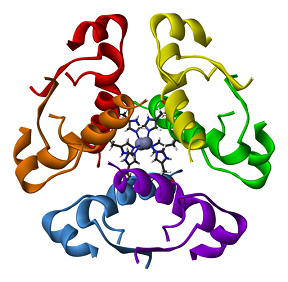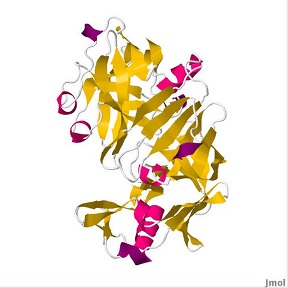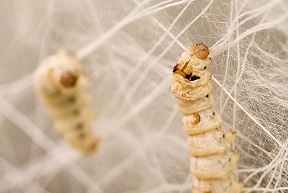Fermentation has been around for a long time. It is the age-old process that lends us bread, yoghurt, vinegar, tofu, beer and wine. A process that for a long-time embellished life. We now also know precision fermentation: producing compounds by using programmed microorganisms. A revolution in chemical industry.

Fermentation and precision fermentation
Fermentation is the breakdown of a chemical substance – often a sugar – by a microorganism. The substances produced by the microorganism depend on its genetic makeup. They can be alcohols; also proteins, fats and enzymes are within this range. Like n-butanol (used in the production of artificial rubber), penicillin, citric acid, a number of amino acids and vitamins like C, B2, B12 and D2.
In the past 100 years, we learned how to adapt these microorganisms to our needs. This has resulted in precision fermentation or PF for short; the next step in this technology. Facilitated by the development of precision biology – a branch of science that unites artificial intelligence and new biotechnologies like genetic modification, synthetic biology and bio informatics. Precision fermentation is also called cellular agriculture: making agricultural produce, not from an animal but from cells, often grown in the lab.
New products
Through PF, in principle microorganisms can make all substances for which we supply them with the appropriate genetic information. Like fragrances that lend more body to our food. The microorganisms act as mini factories that produce the desired product from the resource; but of course, only if we first put the correct genetic codes into them. Genetic codes that researchers retrieve from plants (rarely animals) that produce this substance in real life. We can even let these organisms produce new substances on inserting a new, not yet existing code. This has only been made possible through the fast development of artificial intelligence, automation and simulation.
In the beginning, we used precision fermentation exclusively for the production of expensive products like medicines. But the technology gets cheaper fast. The opportunities of PF start to dawn on researchers now. Precision fermentation has now been developed to such an extent that we can modify many genes with great precision. Resulting in purer products and better yields. Now primarily of medicines and food additives.
Cost keeps on falling
But soon, so experts tell us, we will be able to make any protein. Moreover, cost will continue to fall. Now, the technology has got a strong foothold already in the so-called biologics – substances used to combat conditions like multiple sclerosis, inflammations, diabetes and cancer. And in the production of cosmetics. RethinkX expects that we will be able to produce many proteins at market prices by 2025 – and that they will conquer the market in the subsequent years. We need to consider now, which markets could be conquered by PF, and which ones could not (and why). We should do this now; in order not to be surprised by developments.

New products
Insulin was the first product we made by precision fermentation – the antidiabetic medicine. That was in the early ‘80s. Many medicines followed in the years after that, like the human growth hormone, the vaccine against hepatitis B, and erythropoietin, a hormone produced by the kidneys, instrumental in the production of red blood cells. These pretty expensive products formed the stepping stones for the subsequent development of the technology.
Cost reduction is the catchword of this further development. As a consequence, the markets for PF products have exploded. We don’t use the technology any more for just producing vitamins and medicines. We also produce industrial enzymes through this pathway nowadays; used in the production of food ingredients, textiles, cosmetics and detergents. PF allows us to produce purer compounds than nature does; applied in hotter, colder, more acid environments, rendering them broadly applicable. Food additives as well are among the products that we can produce purer and cheaper through PF than through the old pathways. Like orange flavour (valencene) and raspberry flavour. PF produced substances have pervaded deeply into our lives – without most people noticing it.

Cheese
One of the most successful products made through PF is artificial chymosin, the enzyme responsible for producing cheese from milk. It allows us to produce better cheeses than if we should use rennet, the old agent retrieved from calves’ stomachs. Having higher yields and a better structure, and moreover resulting in a less bitter product. By far the majority of cheeses is now being produced by this substance. Of course, we can also make vegetarian cheeses from it. For instance, the cheeses of Those Vegan Cowboys, a spin-off of the Vegetarian Butcher in the Netherlands. Even though vegetarians need to be aware. At times, even vegan cheeses are produced through the use of rennet – product information might answer questions in this area. We produce soft vegan cheeses from nuts, particularly cashew nuts. We can very well produce harder cheeses from coconut oil – a solid at room temperature. Soy beans also lend themselves well to cheese production. Together with vegetal oils, lactic acid bacteria and seasonings. Cheeses produced through these pathways are all free from cholesterol.
Solar food
And we increasingly succeed in producing so-called monocellular proteins, as a food and as a fodder. These are cells of cyanobacteria and other microorganisms that we produce through modern biotechnology from carbon dioxide (CO2) in special fermenters. By companies like Photanol in the Netherlands and Alganol in the US. They produce these cells through different pathways, by photosynthesis using solar radiation, or from sugar in a fermentation process. The final product consists of monocellular organisms containing much protein. And other products, like omega-3 fatty acids and vitamins, essential in a number of applications.
Dr. Juha-Pekka Pitkänen of the Finnish research centre VTT developed a system for the production of unicellular proteins, and recently set up a new company with the perfect name for its products: Solarprotein. It will produce unicellular proteins for use in human and animal food. When asked for the taste of Solarprotein, Dr. Pitkänen said: ‘It is edible – but it doesn’t have a taste of its own.’ Therefore, it is a perfect food ingredient: it can be tuned towards the customer’s taste. In the case of Veramaris, a joint venture of Evonik and DSM, these customers will be fish growers. They specialize in producing cells with high concentrations of the essential omega-3 fatty acids EPA and DHA; that will substitute the fish meal (from fish), often used in growing fish.
And the vistas go even further. On internet, researchers fantasize about the production of non-addictive opioids. Of palm oil that doesn’t come from the plantation. Of chicken-free proteins like those found in eggs, and of useful substances produced from waste. Yes, we might use the term ‘fantasize’; but at this very moment they might work hard to realize those fantasies. We will surely run into surprises in the future!

Precision fermentation, now also in materials
As costs fall, many more markets will open up. Even outside the food sector. How about artificial silk? No, not rayon, developed in the 19th century. Also called viscose. Viscose is still in use, for it as soft as cotton; the substance is even softer and more supple, and has a silk-like feel. But it crumples easily; and therefore, it has been substituted to a large extent in the realm of clothing – or it is being mixed with other yarns, producing better quality. But no, we don’t have this substance in mind.
We have in mind artificial silk, a substance that has almost the same properties as natural silk. Very strong and light. Spiber company produces parkas from this substance, sold presently by the international luxury chain Woolrich. They call their product ‘brewed proteins’. Produced in a fermentation process through microorganisms from sugars. They produced the first copy of their parka ‘The North Face’ in 2016 – it was shown in the Toyota Municipal Museum of Art in Aichi, Japan. And presently, in mass production.
Silkworm
Even more remarkable is the artificial silk produced by the American company Kraig Biocraft Laboratories. Whereas Spiber produces its artificial silk through genetically modified microorganisms, Kraig modified the old workhorse, the silkworm, to produce a substance that much resembles spider silk. A major step, because spiders are carnivorous; they eat each other and therefore spider farms are impossible. The company envisages the production of ‘life saving bullet proof materials, lighter, thinner, more flexible and tougher than steel’, and also ‘medical textiles, safety clothing, textile composites, sportswear and fashionwear.’ And the material may also be useful as wound material, artificial connective tissue, tendons and other biological applications.
These prospects existed already in 2018. Since then, Kraig coped with setbacks; particularly with regards to their workhorse, the silkworm. The company still tries to improve the ‘robustness’ of their silkworms. It doesn’t try to scale up production as long as they still come across ‘bottlenecks in the production’. But they tell us, they are working hard to overcome this bottleneck; and then they hope to scale up fast to large-scale production.
Interesting? Then also read:
The disruption of the cow
Towards new agricultural practices
The microbial food revolution
